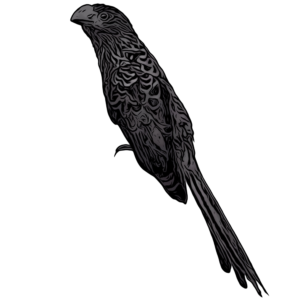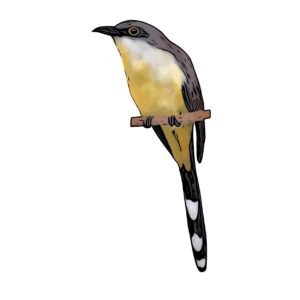Identification
Unmistakeable. The only long-tailed, black bird on the Galapagos.
Description
A meduim sized, overall black bird with a thick set bill, long tail and irridecent markings on its nape and upper back. Sexes are alike. Juveniles are have overall dull blackish plumage.
Galapagos Distribution
Found in a range of habitats across all suitably vegitated islands in the main archipelago, but most common in agricultural and humid zones. Irradication programs have been implimented on some islands such as Marchena, but the result of these remains to be seen.
Global Distribution
Ranges from Florida across the Caribbean and throughout much of South America east of the Andes and North of central Argentina. In NW South America it also occurs west of the Andes and north into parts of Central America.
Status in the Galapagos
An intentially introduced species which is very common on most of the islands with over 250, 000 anis estimated to inhabit the islands in 2010, 80,000 of these on Santa Cruz. This species was intentiolly introduced to the archipelago in the 1960’s as it was thought they could act as a biological controll for ticks on cattle due to their habit of perching on livestock. Although its Spanish name translates directly to ‘tick-eater’ becuase of this, these birds rarely eat ticks.
Conservation
This species is classified as a highly destructive invasive species in the Galapagos due to its huge and rapidly growing population size. Smooth-billed Anis are omnivourous, meaning that not only do they compete with almost all resident species for food, but also actively feed on small birds such as finch chicks. The fact that these anis regularly feed on the fruits of invasive plant species and are strong enough fliers to travel between islands, also means that they act as propogation agents for allien flora. Becuse of these factors, iradication and population controll programs (by hunting) have been put in place.


